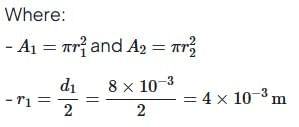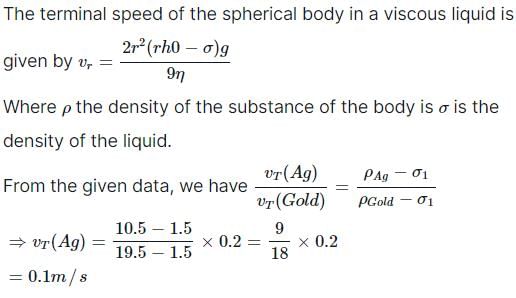Test: Pressure & Its Applications - JEE MCQ
10 Questions MCQ Test - Test: Pressure & Its Applications
In a car lift, compressed air exerts a force F1 on a small piston having a radius of 5cm. This pressure is transmitted to the second piston of a radius of 15cm. If the mass of the car to be lifted is 1350 kg. What is F1?
Which of the following is not an application of Pascal’s Law?
The formula used to find the pressure on a swimmer h meters below the surface of a lake is: (where Pa is the atmospheric pressure)
The pressure at the bottom of a tank containing a liquid does not depend on:
An open glass tube is immersed in mercury in such a way that a length of 8 cm extends above the mercury level. The open end of the tube is then closed and sealed and the tube is raised vertically up by additional 46 cm. What will be the length of the air column above mercury in the tube now? (Atmospheric pressure = 76 cm of Hg)
Find the density when a liquid 5 m high in a column exerts a pressure of 80 Pa.
Two vessels with equal base and unequal height have water filled to the same height. The force at the base of the vessels is:
Water is flowing continuously from a tap having an internal diameter 8 x 10-3 m. The water velocity as it leaves the tap is 0.4 ms-1. The diameter of the water stream at a distance 2 x 10-1 m below the tap is close to:
The terminal speed of a sphere of gold (density = 19.5 g/cm3) is 0.2 m/s in a viscous liquid (density = 1.5 g/cm3). Find the terminal speed of a sphere of silver (density =10.5 g/cm3) of the same size in the same liquid (in m/s)






















